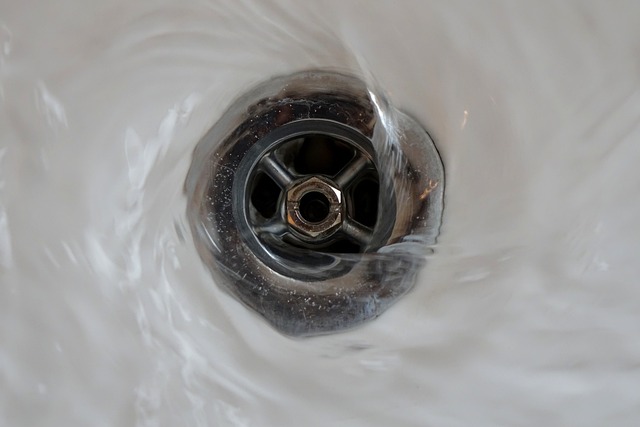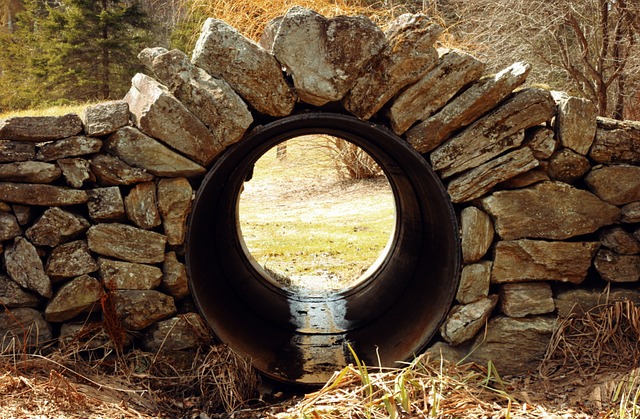TL;DR:
Recognize early signs of clogged drains, like slow water flow and gurgling noises, to prevent severe plumbing issues. Address bad smells indicating bacterial buildup and gas accumulation promptly. Be proactive with simple habits like avoiding grease disposal, using drain covers, cleaning with hot water and baking soda, and installing quality drain screens to minimize clog risk. Regular checking ensures a healthier plumbing system and avoids costly repairs.
Are you tired of sudden, overwhelming drain disasters? Learn to spot the subtle signs earlier. This guide unravels the mysteries behind clogged drains, focusing on the early warning signals like slow drains and persistent bad smells. Discover proactive measures to prevent backups and protect your home from costly damage. Understand the key signs of a clogged drain and take control before it’s too late!
- Recognizing Slow Drains: The First Sign of Trouble
- Unmasking Bad Smells: When Clogs Go Undetected
- Proactive Measures: Preventing Drain Disasters at Home
Recognizing Slow Drains: The First Sign of Trouble

Recognizing slow drains is crucial, as it serves as one of the earliest signs of a potential clog. This may start with a noticeable decrease in water flow when you run the sink or shower. What seems like a slight delay might seem insignificant at first, but it could indicate a growing blockage in your pipes. As water backs up, it can create a gurgling sound, which is another telltale sign that something is amiss.
Don’t overlook these initial signs—a slow drain is not merely an inconvenience; it’s a potential disaster in the making. Clogs can lead to serious plumbing issues, including backups and even burst pipes. Regularly checking for slow drains and addressing them promptly will help prevent more severe problems from arising.
Unmasking Bad Smells: When Clogs Go Undetected

Unmasking Bad Smells: When Clogs Go Undetected
One of the most insidious signs of a clogged drain is an unpleasant odor that seems to waft from the sink or shower. This isn’t always easy to spot, especially if the clog is hidden or only partial. But pay close attention to any persistent or unusual smells, like a rotten egg aroma or a pungent, chemical stink. These could indicate a buildup of bacteria and gasses caused by a clog, which can lead to more serious issues if left unattended.
If you notice these scents without any visible signs of drainage problems, it’s crucial to investigate further. Bad smells often signal that the clog is deeper in the plumbing system, possibly at the main sewer line or even beyond your home’s pipes. Don’t ignore these subtle cues; address them promptly to prevent potential disasters like overflowing drains, water damage, and the costly repairs that follow.
Proactive Measures: Preventing Drain Disasters at Home

To prevent drain disasters at home, it’s crucial to be proactive and address potential clogs early on. Regular maintenance can go a long way in keeping your drains clear and functional. Start by being vigilant for signs of a clogged drain—such as slow drainage or unusual gurgling sounds—and act promptly.
Implementing simple yet effective habits can significantly reduce the risk of severe blockages. These include avoiding pouring grease down the sink, using drain covers to catch hair and other debris, and regularly cleaning drains with hot water and baking soda mixtures. Additionally, consider using a high-quality drain screen or trap to capture larger particles before they enter your pipes.
Understanding the subtle signs, like slow drains and bad smells, can help you prevent costly drain disasters. By taking proactive measures outlined in this article, you’ll be well-equipped to identify and address clogs before they become major issues. Regular maintenance and quick action on these signs ensure smooth-running drainage systems and a hygienic living environment. Remember, knowing the signs of a clogged drain is half the battle won!
